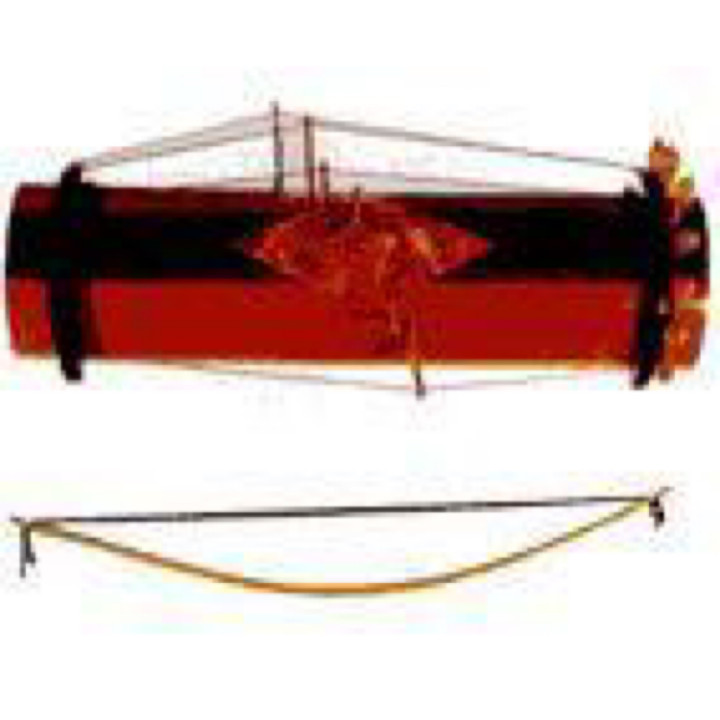Tenny overview
 Chenni (pinyin: chēng ní) is a bow-drawn stringed musical instrument of the Zhuang people. With a long history, simple shape and soft sound, it is often used in solo or ensemble. It is popular in Donglan, Fengshan, Bama and other Zhuang mountainous areas in northwest Guangxi in Hechi area of Guangxi Zhuang Autonomous Region. Also known as "Zhuang lyre" or "Waqin". In the early Ming Dynasty, it was popular in western Guangxi and has a history of 600 years.
Chenni (pinyin: chēng ní) is a bow-drawn stringed musical instrument of the Zhuang people. With a long history, simple shape and soft sound, it is often used in solo or ensemble. It is popular in Donglan, Fengshan, Bama and other Zhuang mountainous areas in northwest Guangxi in Hechi area of Guangxi Zhuang Autonomous Region. Also known as "Zhuang lyre" or "Waqin". In the early Ming Dynasty, it was popular in western Guangxi and has a history of 600 years.The shape of Chenni is simple and simple, and it is composed of a resonance box, a mountain, a peg, a column, a string and a bow.
Chenni, with a long history, used to be called Zhuang lyre, waqin, Tang qin, Fuqin, Shenqin, etc. Most of these are based on the shape of the qin and attached to Han musical instruments, which is very inaccurate. Since the 1980s, the musicians of Guangxi Zhuang Autonomous Region have carried out various forms of reforms on Nepal by learning from other musical instruments. The sound box is widened and enlarged, so that the volume is significantly enhanced, some strings are added, some fingerboards are added, and some the arrangement of the columns is changed, so that the sound range can be expanded, and the playing posture has been changed accordingly. These reforms have effectively promoted the enrichment of Ni's playing skills and the improvement of musical expressiveness.
- Chinese name:Tenny
- Pinyin:chēng ní
- origin:Zhuang
- Features:Simple shape, soft sound
overview of other similar instruments
- sanyanxiao overview
- Daguangxian overview
- Leiqin overview
- hahao overview
- yandundagu overview
- Han Xiaozheng overview
- Fang Xiang overview
- guanzi overview
- zhuqin (Dao Qin) overview
- zhuiqin overview
- bangzi overview
- three-stringed piano overview
- Gehu overview
- xiao overview
- xiaokonghou overview
- Konghou overview
- Sheng overview
- suona overview
- hulusi overview
- gushao overview
 渝公网安备 50010702504639号
渝公网安备 50010702504639号